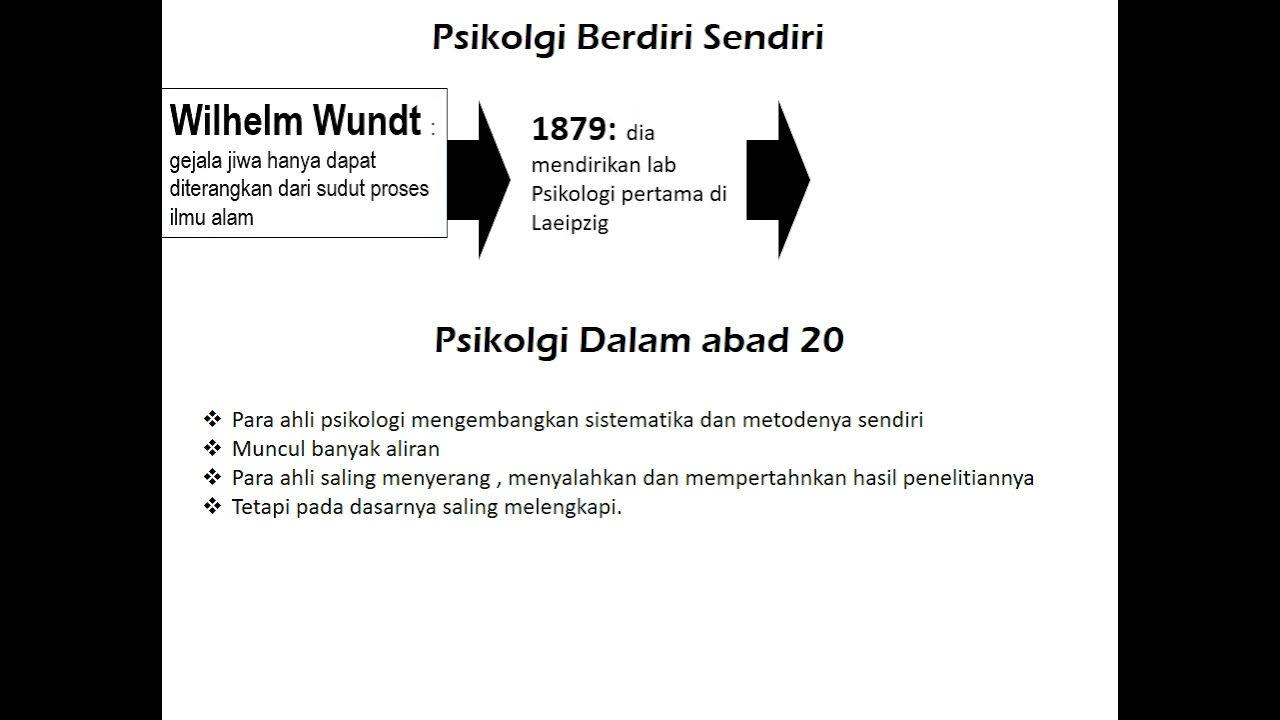Discovering Psychology: Cognitive Process
Summary
TLDRThis video explores the evolution of cognitive psychology, tracing the field's development from the ideas of Descartes to modern research on how humans think, solve problems, and process information. It highlights key thinkers like Howard Gardner and Donald Broadbent, examining how mental processes such as categorization, memory, and schemas function. The video discusses the influence of computers on understanding the human mind and the role of cognitive science in education, showing how concepts, mental imagery, and brain physiology shape our reasoning and learning abilities.
Takeaways
- 🧠 Descartes' famous statement 'I think, therefore I am' highlights the centrality of self-awareness in forming personal identity.
- 📝 Cognitive psychology is the study of mental processes such as memory, problem-solving, decision-making, and communication.
- 🖥️ The advent of computers helped psychologists view the human mind as an information-processing system, similar to how computers work with symbols and data.
- 🔍 Cognitive psychologists use models and flow charts to understand how information is processed in the mind, filtering through stages like perception, memory, and response.
- 📊 Donald Broadbent was a pioneer in applying information-processing models to human thought, creating flowcharts to map the sequence of mental events.
- 💻 Nobel Prize winner Herbert Simon helped bridge computer science and psychology by modeling human thinking with machines, emphasizing symbolic processing.
- 📜 Concepts are mental categories that help us identify and differentiate objects and ideas, such as recognizing different forms of the letter 'A' as part of the same category.
- 🔄 Mental schemas are frameworks for organizing information, allowing us to make sense of the world, anticipate events, and react when expectations are violated.
- 🧩 Prototypes are mental representations of the most typical examples within a category, such as thinking of a robin as the typical bird, rather than a turkey.
- 🧠 Brain imaging techniques, such as PET scans, are used by cognitive scientists to understand which areas of the brain are active during specific tasks like reading and problem-solving.
Q & A
What is cognitive psychology and what does it study?
-Cognitive psychology is the study of all forms of knowing, including processes like remembering, deciding, planning, problem-solving, and communicating ideas. It focuses on how people take in, store, transform, and manipulate information.
How did the invention of computers influence the study of cognitive psychology?
-The invention of computers in the post-World War II era led researchers to view the human mind as a type of information-processing system, similar to computers. This approach helped them model how humans solve problems and process information, comparing the mind to a computer capable of storing and manipulating symbols.
What role did behaviorism play in psychology before cognitive psychology gained prominence?
-In the 1930s and 1940s, behaviorism was the dominant field in psychology. Behaviorists focused on observable actions and behaviors, believing that internal thoughts or mental processes were unimportant or irrelevant to understanding behavior. They did not differentiate between behaviors of animals, infants, or adults.
What is a 'schema' and how does it influence our understanding?
-A schema is a mental framework that organizes and interprets information. Schemas allow people to infer missing information based on past experiences and knowledge. For example, when hearing about a picnic basket, a schema helps infer what's inside it and what to expect. When new information clashes with established schemas, it can cause cognitive dissonance or violations of expectations.
How do cognitive psychologists define 'concepts' and why are they important?
-Concepts are mental representations of related things, like objects, events, or attributes. They help us categorize and understand our world by organizing information. For example, the concept of 'bird' may be based on a prototypical bird like a robin, and concepts are often structured hierarchically, such as 'furniture' > 'chair' > 'desk chair'.
What is the role of 'prototypes' in our mental categorization process?
-Prototypes are typical examples of a category that help us recognize and categorize things quickly. For instance, a robin may serve as a prototype for the category 'bird,' while a turkey is less prototypical. Prototypes allow us to quickly categorize objects and make sense of the world.
How does the mind process complex ideas and concepts according to cognitive psychologists?
-The mind uses schemas to process complex ideas and concepts. Schemas help organize bodies of information and expectations. When processing new information, schemas allow us to make inferences and recognize patterns, simplifying the cognitive load required to interpret and categorize.
What experiment did Steve Costlin conduct, and what did it reveal about mental imagery?
-Steve Costlin conducted an experiment where participants were asked to visualize a motorboat and answer questions about it, such as whether it had a windshield or anchor. The experiment revealed that it took longer to recall information that was located farther away in the mental image, suggesting that people 'scan' mental images similarly to how they scan real-world objects with their eyes.
How are schemas involved in cases of cognitive bias and faulty interpretations?
-Schemas can lead to cognitive biases when they cause us to misinterpret information. For instance, in an experiment where participants viewed an image of a white man holding a knife near a black man, some participants falsely recalled that the black man was holding the knife due to biased schemas about race and aggression.
How has technology like positron emission tomography (PET) contributed to understanding cognitive processes?
-PET scans allow researchers to observe blood flow in different regions of the brain as people perform tasks. This has helped cognitive scientists like Michael Posner understand which parts of the brain are activated during specific tasks, such as reading or generating associations between words, revealing the localization of cognitive functions in the brain.
Outlines

此内容仅限付费用户访问。 请升级后访问。
立即升级Mindmap

此内容仅限付费用户访问。 请升级后访问。
立即升级Keywords

此内容仅限付费用户访问。 请升级后访问。
立即升级Highlights

此内容仅限付费用户访问。 请升级后访问。
立即升级Transcripts

此内容仅限付费用户访问。 请升级后访问。
立即升级5.0 / 5 (0 votes)






